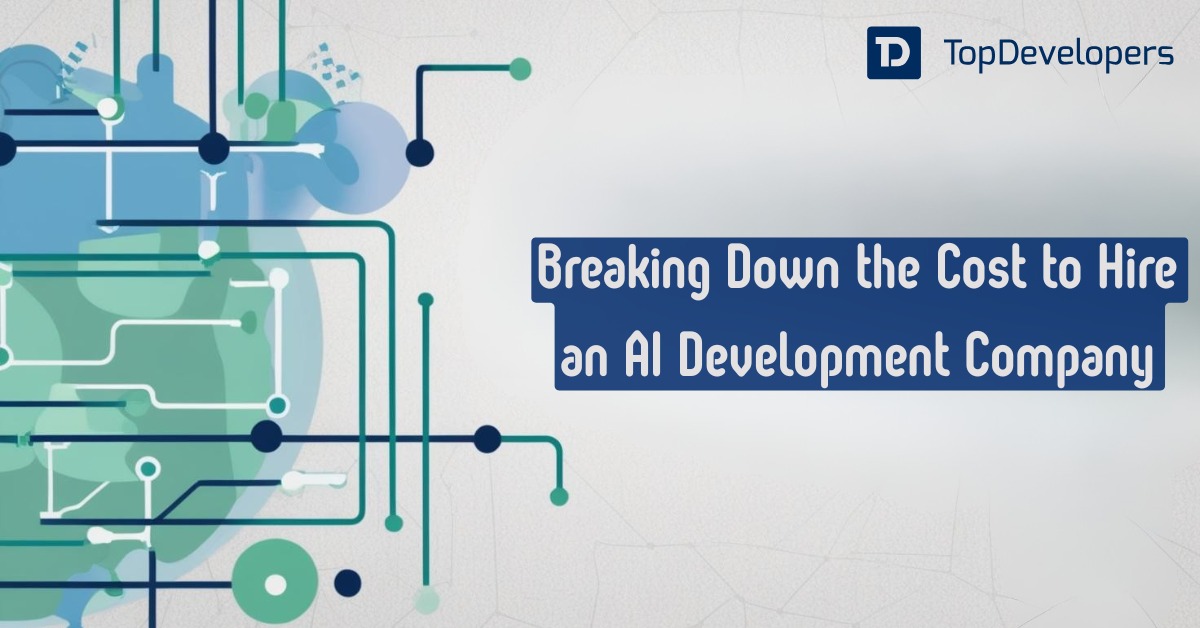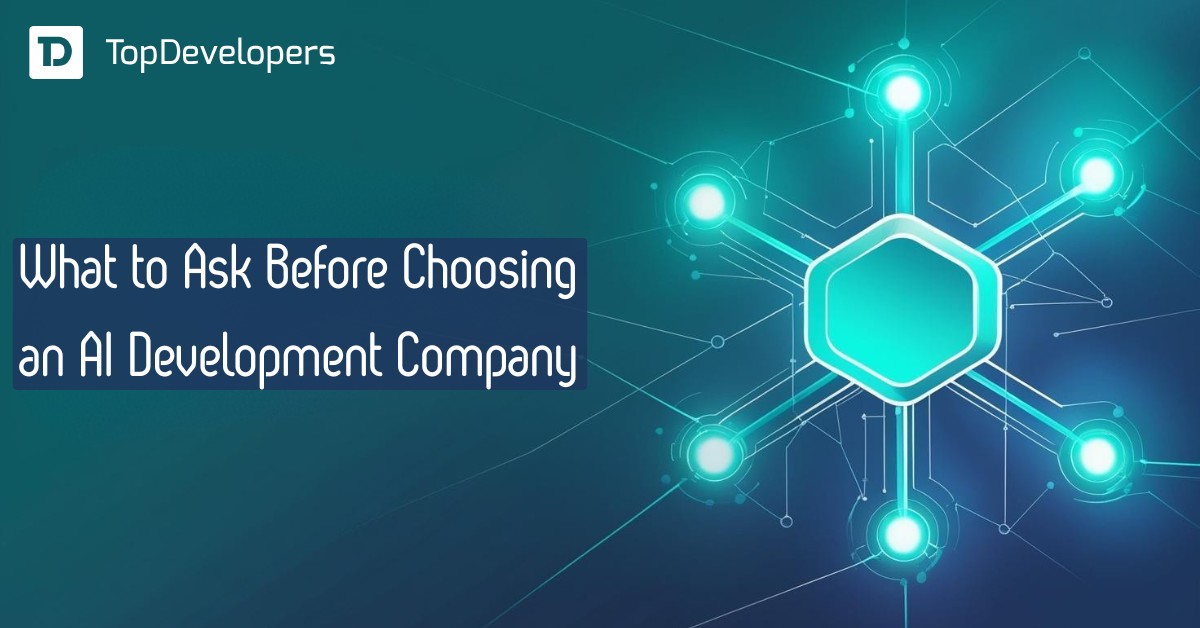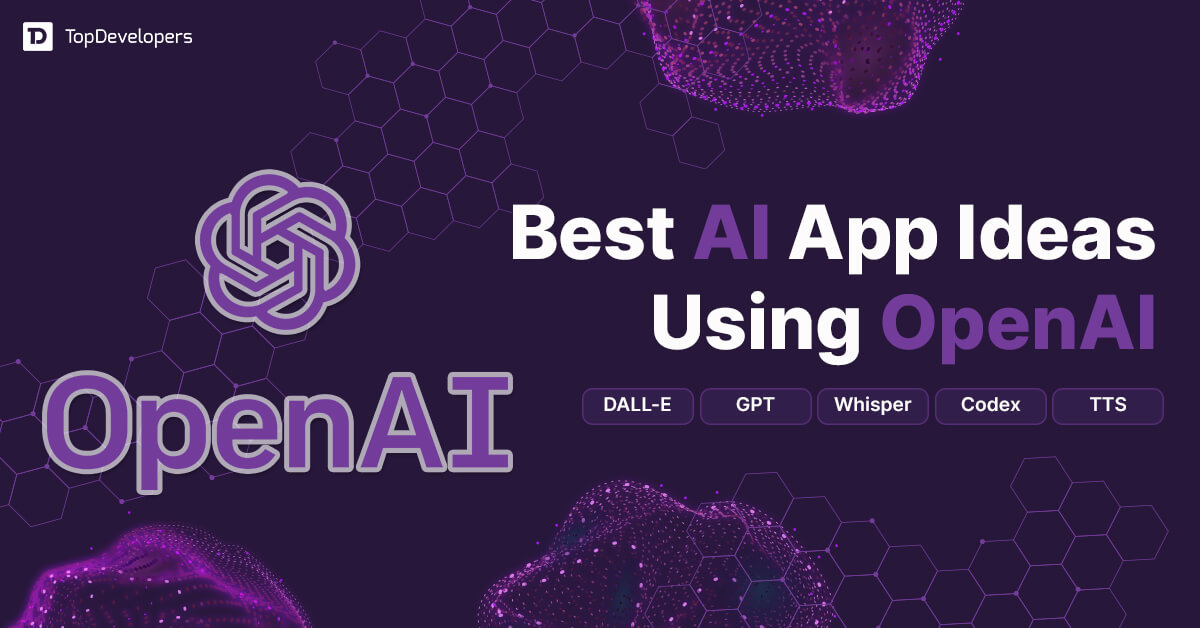
Technology is evolving faster than ever. From automating simple tasks to transforming entire workflows, modern tools are changing how businesses operate. Among these tools, Large Language Models are beginning to shape a new era of competitive advantage.
According to Accenture’s Pulse of Change Index, 61 percent of business leaders expect technology-driven disruption to accelerate in 2024. This rapid shift has placed pressure on businesses to innovate and adapt faster than before. In this environment, LLMs are no longer just technical tools but key assets in strategy and growth.
LLMs can help process large volumes of data, automate content creation, improve decision-making, and personalize customer experiences. The value of these models is not just in what they can do today but how they can scale with evolving needs. As the global generative AI market is expected to exceed one trillion dollars by 2033, businesses that learn to leverage LLMs now are more likely to lead their industries in the coming years.
Understanding what LLMs are and how to use them effectively can open new paths to efficiency and innovation. This blog explores the strategic value of LLMs, practical use cases, and ways to implement them as a long-term advantage over competitors.
Table of Contents
- What is LLM?
- An Evolution of LLMs: From Beginning to Today
- The Strategic Value of LLMs in Business
- Best Real-World Applications of LLMs
- Must Read Case Studies of Large Language Models
- How to Implement LLMs in Your Business?
- How to Integrate LLM in Your Business? A Step-by-Step Guide
- Step 1: Identify High-Impact Use Cases
- Step 2: Select the Appropriate LLM Platform
- Step 3: Prepare and Structure Input Data
- Step 4: Build Technical Infrastructure
- Step 5: Run Pilot Tests with Target Users
- Step 6: Train Staff and Define Responsible Use Policies
- Step 7: Monitor Performance and Optimize Over Time
- How to Measure the Impact of LLM?
- Conclusion
What is LLM?
Large Language Models, commonly known as LLMs, are advanced AI systems designed to understand and generate human language. These models are trained on massive datasets that include text from books, websites, articles, and other publicly available sources. By analyzing patterns in this data, LLMs learn how language works, enabling them to respond intelligently to different prompts.
At the core of an LLM is a deep learning architecture called a transformer. This architecture allows the model to process information in a way that mimics human understanding. Unlike traditional rule-based systems, LLMs can generate context-aware responses, making them suitable for a wide range of applications such as answering questions, writing text, summarizing content, and even generating code.
The strength of an LLM lies in its ability to handle natural language tasks with high accuracy and minimal input. This makes it a valuable tool for businesses that want to enhance communication, streamline operations, or explore new service offerings.
As LLMs continue to evolve, their role in decision-making, automation, and innovation is becoming more prominent across industries.
An Evolution of LLMs: From Beginning to Today
Large Language Models (LLMs) have come a long way from rule-based systems to highly intelligent tools that understand and generate human language. Their development has been shaped by progress in machine learning, access to large datasets, and improvements in computing power. Below are key moments that highlight how LLMs have evolved over time.
- Early models used handcrafted rules and basic statistical methods for language processing.
- The introduction of neural networks improved pattern recognition and learning capabilities.
- Recurrent neural networks enabled better handling of sequential language data.
- The transformer architecture allowed models to process language with greater context and scalability.
- Pretrained models became popular, reducing the need for task-specific training from scratch.
- Models like GPT and BERT demonstrated the potential of large-scale training across diverse tasks.
- Fine-tuning techniques allowed LLMs to adapt to specific business needs with limited data.
- Multilingual support made LLMs accessible for global use cases across industries.
- Integration with APIs and business platforms made adoption easier and more practical.
- Continuous training and optimization are now making LLMs more efficient and resource-friendly.
The Strategic Value of LLMs in Business
Large Language Models offer a wide range of strategic benefits that can help businesses outperform their competitors. By integrating LLMs into business operations, companies can unlock new efficiencies, drive innovation, and enhance decision-making. The following strategies highlight how LLMs contribute to business success.
Enhancing Operational Efficiency
LLMs streamline repetitive and time-consuming tasks that previously required human input. From drafting emails to generating reports and summarizing documents, these models help reduce manual workloads. This allows employees to focus on higher-value activities, improving overall productivity and reducing operational costs.
Supporting Smarter Decision-Making
LLMs can analyze vast volumes of data and present insights in an understandable format. Whether it’s summarizing market trends, extracting key points from research, or generating business forecasts, these models assist leaders in making informed decisions. This level of support improves responsiveness in a fast-changing business environment.
Powering Personalized Customer Experiences
Personalization is key to customer satisfaction. LLMs help tailor communication and product recommendations by analyzing customer data and preferences. They can generate targeted messages for different customer segments, improving engagement and boosting brand loyalty.
Accelerating Product and Service Innovation
By generating ideas, testing concepts, and analyzing user feedback, LLMs can contribute to faster product development cycles. Businesses can explore new markets, refine services, and gather feedback more efficiently. This accelerates innovation and allows quicker adaptation to market demands.
Improving Internal Knowledge Management
LLMs can act as intelligent assistants for internal teams by organizing and retrieving company information. They can answer employee queries, explain processes, and summarize internal documents. This reduces time spent searching for information and supports better collaboration across departments.
Best Real-World Applications of LLMs
Large Language Models are being integrated into real business processes across a variety of industries. Their ability to understand and generate language makes them useful in both customer-facing and internal roles. Here are five real-world applications that show how LLMs are making a tangible difference in daily operations.
Automating Customer Support
Businesses are using LLMs to power virtual assistants and chatbots that handle customer queries around the clock. These systems can understand context, provide accurate responses, and escalate issues when needed. This improves response times and customer satisfaction while reducing the need for large support teams.
Generating Marketing Content
Marketing teams use LLMs to generate blog posts, social media updates, email campaigns, and product descriptions. These models can follow tone guidelines and adapt messages to specific audiences. This helps businesses maintain a consistent brand voice and publish content more frequently without extra resources.
Supporting Financial Analysis
In the finance sector, LLMs assist with analyzing market data, generating reports, and summarizing complex financial statements. They help teams stay updated with economic changes and make more accurate forecasts. This speeds up analysis and supports faster investment decisions.
Simplifying Legal Review
Law firms and in-house legal teams use LLMs to review contracts, summarize case files, and identify key legal clauses. This application reduces manual effort and minimizes the risk of oversight. LLMs can also help in generating drafts of legal documents for faster review and customization.
Enabling Intelligent Search and Knowledge Retrieval
Many businesses are applying LLMs to improve internal knowledge systems. Employees can ask questions in plain language and receive clear, accurate answers sourced from internal documentation. This reduces the time spent searching for information and helps teams work more efficiently.
Must Read Case Studies of Large Language Models
The adoption of LLMs is not limited to startups or tech-driven platforms. Leading enterprises across industries are already implementing these models to drive measurable improvements in productivity, decision-making, and service delivery. The following case studies highlight how two major players are using LLMs to stay ahead of the curve.
JPMorgan Chase
One of the largest financial institutions in the world, JPMorgan Chase has begun using LLMs to support both internal teams and customer-facing services. The bank applies language models to assist employees with legal document analysis, code generation, and task automation. This helps reduce manual effort and streamline time-consuming processes such as regulatory compliance and reporting.
According to a report from the Wall Street Journal, JPMorgan has also created a dedicated AI division to explore further opportunities in finance using LLMs. The institution sees LLMs as part of its long-term strategy to boost efficiency, improve client service, and build advanced tools for data interpretation.
Source: The Wall Street Journal
Allen & Overy
A prominent international law firm, Allen & Overy has incorporated LLMs into its legal service processes using a platform called Harvey. This AI-powered solution is used by over 3,500 lawyers at the firm to generate legal drafts, review contracts, and support due diligence.
By using LLMs to understand and process legal language, Allen & Overy has been able to improve turnaround time without compromising the quality of legal review. The firm emphasizes that these tools do not replace lawyers, but enhance their productivity and reduce time spent on routine tasks.
Source: Wikipedia – Harvey (software)
How to Implement LLMs in Your Business?
Adopting a Large Language Model is not just about adding a new tool to the system. It involves careful planning, goal-setting, and alignment with broader business needs. To make the most of what LLMs offer, a thoughtful approach to implementation is essential.
Identifying the Right Business Functions
Start by assessing where LLMs can offer the most value. Look for departments or tasks that involve language-heavy workflows such as customer support, content creation, research, compliance, or reporting. These areas are typically well-suited for LLM integration due to their repetitive or knowledge-driven nature.
Defining the Business Objective
Every LLM initiative should begin with a clear purpose. Whether the goal is to reduce turnaround time, improve customer engagement, or enhance internal knowledge sharing, defining the desired outcome ensures the technology is applied with focus. Clear objectives also make it easier to measure success after deployment.
Evaluating Data Readiness
LLMs require access to relevant and well-structured data to operate effectively. Review the availability, quality, and privacy of internal data. If the required data is scattered or inconsistent, this may affect the performance of the model. A strong data foundation sets the stage for better results.
Checking Technical Compatibility
Before implementation, businesses should assess whether their current systems can support LLM integration. This includes evaluating the IT infrastructure, APIs, data pipelines, and cloud capabilities. In some cases, using third-party platforms or hosted services may be more suitable than full-scale in-house development.
Planning for Governance and Oversight
LLMs can generate high-quality output, but they are not infallible. Planning for human oversight, review cycles, and proper governance is important. Establishing usage guidelines and accountability frameworks helps maintain reliability and reduces risks related to bias, privacy, or inaccuracies.
How to Integrate LLM in Your Business? A Step-by-Step Guide
The integration of a Large Language Model into a business environment is a strategic process that requires both technical and operational readiness. To make sure the model delivers consistent and reliable outcomes, every step from selection to deployment must be thoughtfully planned. Below is a detailed step-by-step breakdown to guide businesses through successful LLM integration.
Step 1: Identify High-Impact Use Cases
The first step is to determine where an LLM can deliver the most value. Instead of applying it broadly, start with a single use case that has a clear, measurable outcome. This could be automating customer inquiries, drafting internal reports, generating training manuals, or improving content workflows.
Evaluate areas where language tasks are frequent, time-consuming, or inconsistent. Look for inefficiencies or bottlenecks that could be resolved with AI assistance. Choosing the right use case early on builds internal confidence and sets the stage for gradual expansion.
Step 2: Select the Appropriate LLM Platform
Once a use case is defined, the next step is to select the right LLM platform or provider. Options include large commercial models available through APIs, open-source models that can be fine-tuned, or custom-trained models developed in-house.
Key considerations when choosing a platform include:
- Accuracy and fluency of language generation
- Availability of fine-tuning or domain adaptation
- Security features for data protection
- Compliance with regulatory standards
- Integration capabilities with your current systems
- Cost structure and scalability options
Choosing a provider that aligns with both technical needs and business goals ensures a smoother integration experience.
Step 3: Prepare and Structure Input Data
Before implementation, ensure that the model has access to high-quality and well-structured data. This involves curating relevant text, cleaning noisy or irrelevant inputs, and organizing content in a consistent format.
For example:
- If integrating with a knowledge base, ensure documents are up to date
- If using customer chat logs, remove personally identifiable information
- If working with financial or legal text, standardize formatting and terminology
Data preparation also includes reviewing privacy policies, applying necessary anonymization, and confirming whether third-party access to data complies with internal governance.
Step 4: Build Technical Infrastructure
With data ready and the model selected, the technical foundation must be established. This step involves integrating the LLM into existing tools or platforms using APIs, SDKs, or direct backend configurations.
Key components of this setup include:
- Building secure API endpoints
- Defining system architecture and data flow
- Setting up access controls and authentication layers
- Monitoring response time and model uptime
- Testing fallback mechanisms in case of failure
In some cases, businesses may use no-code or low-code platforms to build initial prototypes before moving into full-scale development. This flexibility allows teams to iterate quickly without heavy dependencies on engineering.
Step 5: Run Pilot Tests with Target Users
A controlled rollout is necessary to evaluate real-world performance before scaling. Select a small group of internal users to interact with the system and gather detailed feedback.
During this phase:
- Monitor how the model responds to typical queries
- Measure the accuracy and consistency of outputs
- Identify any edge cases or recurring errors
- Track overall user satisfaction and ease of use
This testing phase helps refine the model prompts, user interface, and integration logic before public-facing or full-staff deployment.
Step 6: Train Staff and Define Responsible Use Policies
Even the most advanced systems require human collaboration. Employees must understand how to use the LLM effectively and where to draw the line between automation and manual review.
Key elements to include in staff onboarding:
- Demonstrations of real use cases
- Examples of effective prompt writing
- Guidelines for evaluating AI-generated content
- Escalation paths when outputs are unclear or inaccurate
- Policies around data entry, user roles, and access rights
This step ensures accountability and helps create a culture that treats the LLM as a partner rather than a replacement.
Step 7: Monitor Performance and Optimize Over Time
Post-deployment, the focus shifts to ongoing performance monitoring. Regular analysis helps ensure the system continues to deliver value and evolves alongside business needs.
Set up metrics such as:
- Task completion rate
- User engagement and satisfaction
- Response quality across different queries
- Reduction in time spent on manual tasks
- Error frequency and escalation count
As confidence builds, businesses can scale the model’s use to new departments or develop more advanced use cases. Integration is never a one-time event but a continuous improvement cycle supported by feedback and iteration.
How to Measure the Impact of LLM?
Once a Large Language Model is integrated into a business process, the next priority is evaluating whether it delivers the intended value. Measuring the impact of an LLM involves looking at both quantitative and qualitative outcomes. This helps validate the investment and also guides future improvements. The following key areas provide a well-rounded approach to measuring the performance and effectiveness of an LLM in a business environment.
Operational Efficiency
One of the first signs of successful LLM integration is time saved across workflows. Track the time spent on tasks before and after LLM deployment. If customer support teams are resolving issues faster or marketing departments are publishing content more quickly, this indicates improved efficiency.
Businesses can also monitor task automation rates. A rise in the number of tasks completed by the LLM without human intervention signals that it is functioning reliably and freeing up internal resources.
Output Quality and Accuracy
Accuracy is critical, especially when an LLM is used in areas like legal review, financial reporting, or technical writing. Regular sampling and manual reviews of generated content help assess quality. Compare model responses with those written by subject-matter experts to ensure that the model meets internal standards.
If fine-tuned prompts are being used, tracking how often they produce high-confidence results can also be useful in refining prompt structures.
User Engagement and Adoption
The success of an LLM also depends on how comfortably teams adopt and use it. Monitor the frequency of use, number of active users, and engagement across different departments. If usage trends increase steadily, it is a sign that the model is being accepted as a helpful business tool.
Gathering feedback through surveys or short interviews can provide insight into what users find useful and where they face friction. This feedback becomes the foundation for future training or updates.
Business Impact Metrics
LLMs should contribute directly or indirectly to measurable business outcomes. These could include increases in lead conversions due to faster response times, improved customer satisfaction from better support, or faster onboarding from more efficient internal documentation.
Track performance indicators that align with the original goals set during the planning stage. These metrics vary by use case but should reflect value creation over time.
Risk and Error Management
Although LLMs can enhance productivity, monitoring for errors and risks is equally important. Set up reporting mechanisms that track inaccurate outputs, flagged content, or compliance violations. A decline in manual corrections or error rates indicates that the model is maturing and becoming more reliable.
Being proactive in this area not only protects the business from issues but also helps improve model performance through continuous learning and refinement.
Conclusion
The rapid evolution of Large Language Models is not just a trend, but a clear signal of where business innovation is heading. From improving operational efficiency to enhancing customer interactions, LLMs are creating new standards for performance and intelligence in daily workflows. What once required complex coordination and large teams can now be streamlined through language-based AI that adapts quickly and scales effortlessly.
For businesses looking to remain competitive in dynamic markets, understanding and using LLMs effectively is no longer optional. Their flexibility allows companies to move faster, make better decisions, and explore new product or service possibilities without waiting on lengthy development cycles. The most forward-thinking businesses are now approaching LLMs as core elements in their strategic planning rather than isolated technical tools.
As adoption grows, the knowledge offered by Top AI LLM development companies continues to shape how different sectors deploy these models. This collective advancement is accelerating the standardization of best practices and driving broader acceptance across industries.
The advantage lies not in having access to the technology, but in knowing how to apply it with purpose and precision. Businesses that build this understanding early are more likely to lead with clarity and confidence in a future shaped by intelligent systems.
 Gillian Harper
| Apr 4, 2025
Gillian Harper
| Apr 4, 2025
A professionally engaged blogger, an entertainer, dancer, tech critic, movie buff and a quick learner with an impressive personality! I work as a Senior Process Specialist at Topdevelopers.co as I can readily solve business problems by analyzing the overall process. I’m also good at building a better rapport with people!


